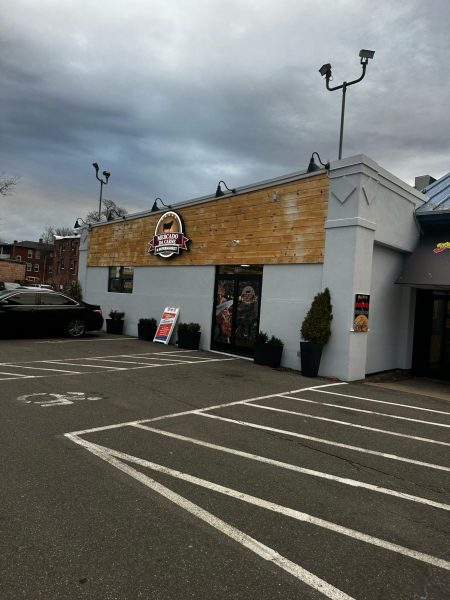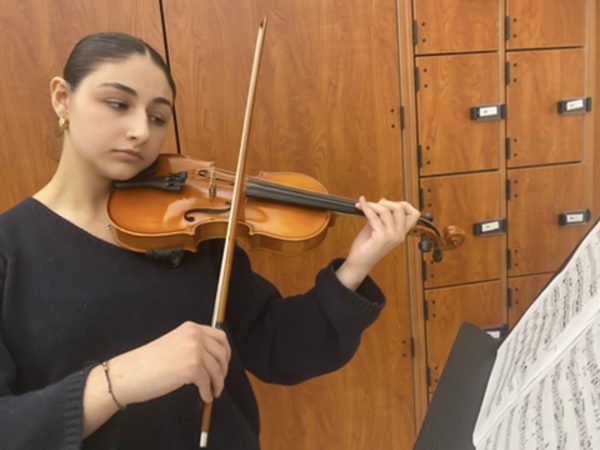Blindness: The Possibility of a Cure
Glaucoma is diagnosed as a spread of ocular conditions that damage the optic nerve due to a buildup of fluid in the eye(s), resulting in intraocular pressure. Glaucoma is one of the leading causes of blindness in people of any age, though it is most commonly found in adults, especially those who are over the age of 60. Many people around you may have glaucoma, knowingly or unknowingly, as it can develop without warning, or only become detectable in its late stages. Even if one visits the eye doctor yearly as recommended by physicians, once diagnosed, there is no cure to reverse the damage caused by glaucoma, only a preventative treatment to slow the progression of the disease and vision loss if glaucoma is diagnosed in its early stages.
Vision loss is inevitable when diagnosed with glaucoma. My grandmother, 67 years old, has struggled with her diagnosis of acute-angle closure glaucoma for many years. Even though she had reported to her annual wellness checks at her optometrist’s office, she woke up one morning with blurriness in her vision, a pounding headache, and eye pain, later finding out that it would never be recovered. Restricted from driving and hardly able to identify the members of our family, it has been a frustrating experience for her, and heartbreaking for us family members to witness. This is only one of the countless conditions that harm the optic nerve and result in residual vision or permanent blindness.
After helping take care of my grandmother daily for much of my childhood, I took an interest in the topic of vision, particularly glaucoma When one experiences trauma or neurodegenerative disease that pertains to the ocular region, the axons in the optic nerve fail to spontaneously regenerate, leading to blindness. Vision loss due to injury, genetic disease, or trauma is prevalent in the general population of our societies, and a disability that results in difficulty performing day-to-day operations in a large portion of individuals around the world. This was the situation that my family had experienced indirectly, faced with the hardships of this irreversible disease. With every visit to the doctor’s office, she had been administered eye drops and was sent home with another medication with the hopes that the progression of the disease would be slowed. I always found myself wondering why there was no cure, simply more treatments that would prolong her inevitable prognosis, though it became clear to me after researching more about damage to the optic nerve that essentially nothing could be done as our vision is a factor controlled by genetics. However, over numerous years of research, several scientists have found potential experimental treatments that led to the regeneration of a small subset of axons, in animal models of disease, which have successfully reconnected with postsynaptic targets to form functioning synapses. Some of these treatments target the PI3K/mTOR intercellular signaling pathway, while the molecular mechanisms underlying other potential treatments are still being investigated by scientists. Although this discovery could not completely cure blindness as a whole, it was one of the first steps in finding a remedy to help those who suffer from blindness regain vision, even if it is just in small portions.
Recently, I had the opportunity to visit the neuroscience research lab run by Doctor and Professor Feliks (Ephriam) Trakhtenberg at the University Of Connecticut in Farmington, CT. Walking into the lab, my eyes widened as they shot all around the room looking at the variety of lab equipment and research tools present, with a few student researchers busy at the feat of a project. They were all engrossed in their work focused on a different aspect of the same topic, which was axon regeneration after injury to the optic nerve. Building on the discoveries that enabled a small number of axons to regenerate, the lab staff began to look deeper into the issue, going back to the root of human development in the womb; the genes. The axons grow fine during embryonic development, therefore the lab is focusing on reactivating such genes after injury. For example, by targeting a specific group of genes (Bex/Tceal) that was found to be responsible for the signaling pathways that are involved in the function of the CNS system in mammals, a certain gene in that family was found to be single-handedly responsible for the developmental upregulation suppression (Tceal3) of axon regeneration. When mRNA expression of this gene was inhibited by knockdown using shRNAs, it was found that the axons in the test group (Anti-Tceal3 shRNA) were able to regenerate about 1.5 mm away from the site of injury, whereas the control group (scrambled shRNA) was found to have just minor axonal sprouting. This was discovered through gene expression analysis, animal studies, tissue processing, quantification of regeneration axons, and statistical analysis. Although small, the amount of regeneration that was found through the knockdown of this gene could be one of the next steps in leading the research and clinical trials that could one day help people partially, and possibly completely, regain vision after damage to the optic nerve. This would help improve the quality of life of the 60 million people in the world that suffer from glaucoma, such as my grandmother, and the millions more who have suffered optic nerve crush that has resulted in the loss of vision.
Where some may have felt afraid or overwhelmed by the copious amount of research in the lab and the information is expressed in the research journals, I felt comfortable as if I were right where I belonged. I asked countless questions about the research being done, the results at that point in time, etc. I had always been shy in educational settings, never speaking out in class or asking for help out of fear of appearing foolish. Though after stepping into this lab, I knew that this curiosity would only open up many different paths for me. As asking a question can only lead to an answer, I found myself wanting to be a part of discovering the answer. I was inspired the second I walked into the room, and I became fully convinced that medicine was something I wanted to pursue in the future. A huge part of this desire was due to the student researchers. Observing them carry out procedures that would someday help in the development in recovery of vision due to optic nerve injuries, I could see myself in their position, researching something that is as important to me as this study is for these students, and for the population of visually impaired individuals in the world. This had become my vision, as a result of my grandmother losing the majority of hers.





